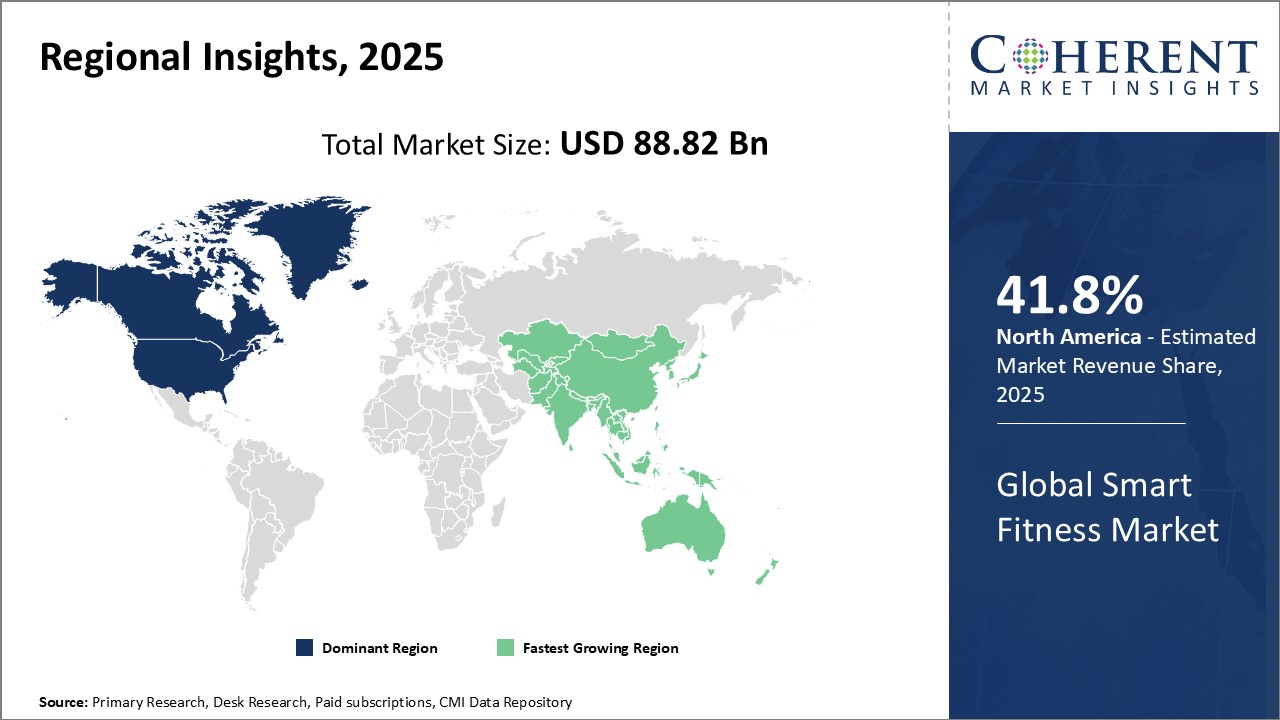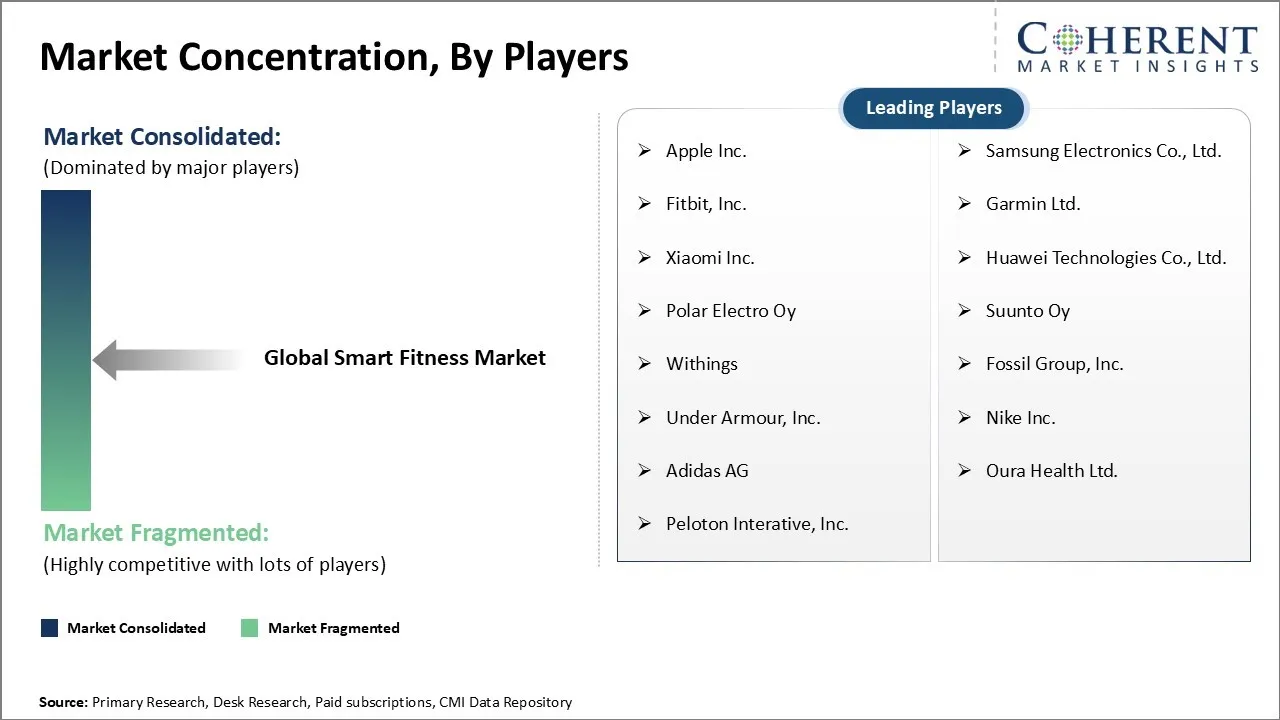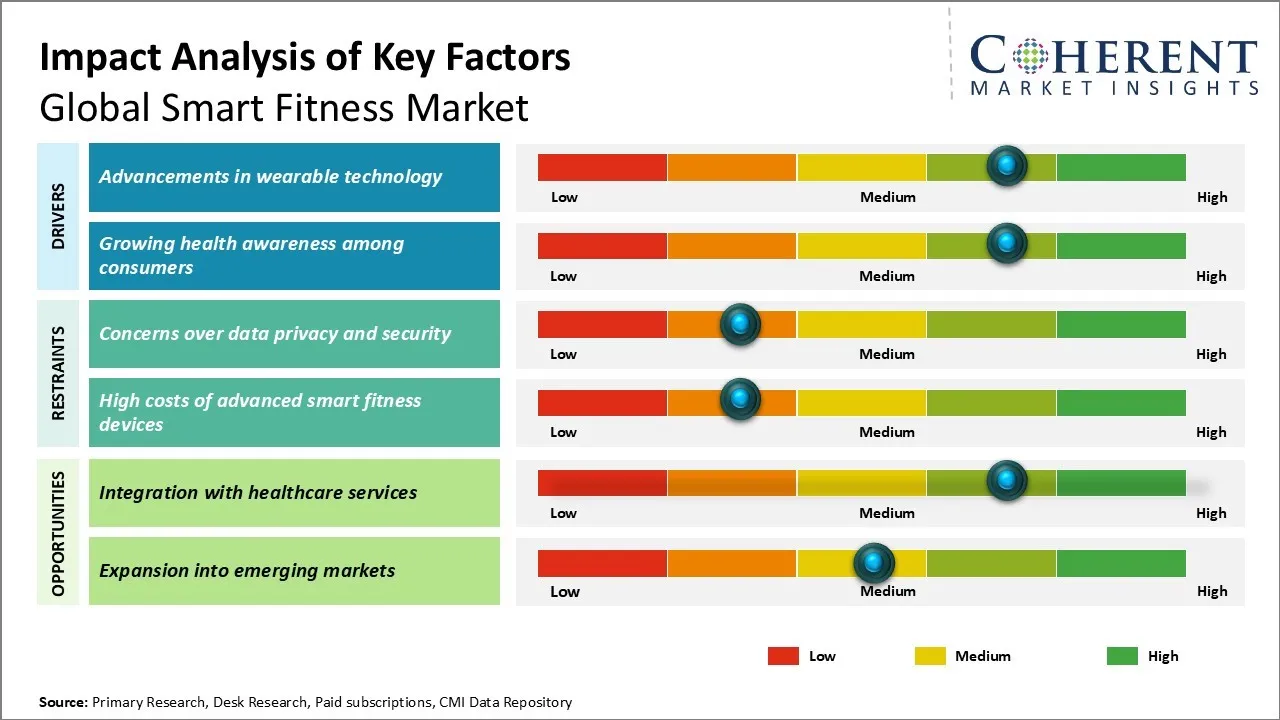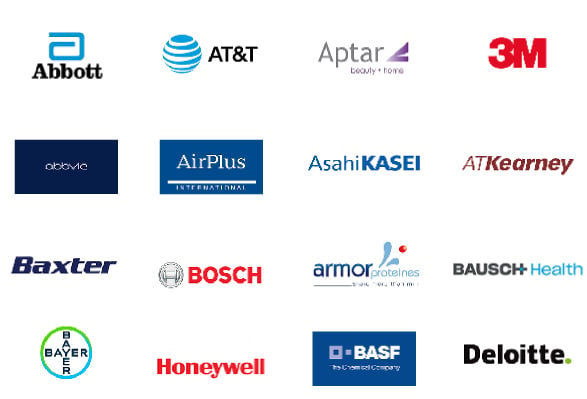The Global Smart Fitness Market is estimated to be valued at USD 88.82 Bn in 2025 and is expected to reach USD 189.11 Bn by 2032, exhibiting a compound annual growth rate (CAGR) of 11.4% from 2025 to 2032.
Key Takeaways of the Global Smart Fitness Market
Market Overview
The smart fitness market growth can be attributed to rising health consciousness among people and growing preference for smart and connected devices. Wearable fitness devices and apps have gained widespread acceptance among both casual and frequent gym-goers. The increasing proliferation of smartphones integrated with health-tracking features is also supporting the demand for smart wrist bands, smartwatches, and other connected fitness devices. Advancements in artificial intelligence and introduction of more accurate sensors are expanding the capabilities of smart fitness products. Major players, such as Apple and Samsung, are focusing on developing innovative solutions to attract more users and drive the market growth. The COVID-19 pandemic has further boosted the demand as people started using smart fitness devices and virtual coaching/workout apps to stay active while staying at home during lockdowns.
Product Type Insights – Fitness Trackers Take the Lead Due to Convenience and Affordability
Fitness trackers have emerged as one of the most popular product categories in the global smart fitness market, holding an estimated share of 44.9% in 2025. This can be attributed to their compact size, ease of use, and affordable price points. These wrist-worn devices allow users to easily monitor key health vitals like steps, calories burned, heart rate, and sleep without having to carry around bulky equipment or smartphones. Their small form factor makes them extremely convenient to use throughout the day across different physical activities.
Moreover, fitness trackers are significantly more affordable than other connected devices like smartwatches. This affordability has made them accessible to mainstream consumers who are looking to simply track basic metrics as part of their fitness routines. The low prices have also encouraged users to upgrade to the latest tracker models, driving replacement demand in the market. Various product and technology innovations such as longer battery life, vibrant color displays, and new activity/workout tracking features are further attracting users.
Distribution Channel Insights – The Online Segment Drives the Highest Sales Share in the Global Smart Fitness Market
The growing preference for online shopping among health-conscious consumers has made the online segment the highest revenue generator in the global smart fitness market, holding an estimated share of 57.74% in 2026. This is because customers find it convenient to research and compare different products and brands while sitting at home before making a purchase decision.
Online retailers are able to offer competitive pricing and discounts due to lower operating costs compared to physical stores. Many also provide complementary services like fast delivery, easy returns, and replacement policies to enhance customer loyalty. Fitness device marketers have additionally boosted their online profiles through strategic investments in marketing, sponsored product reviews, and social media presence.
However, major brands still leverage select offline distribution to provide hands-on experience and after-sales support. But online channels have undoubtedly emerged as the key driver in reaching the global customer base in a cost-effective manner. Their growing influence is expected to continue propelling the smart fitness industry in the coming years.

To learn more about this report, Request sample copy
North America Smart Fitness Market Trends
North America is anticipated to lead the smart fitness market, holding 41.8% of the market share in 2025. The region’s dominance can be attributed to factors such as the presence of major fitness technology companies and the high adoption of wearable devices and smart home equipment for health monitoring. Government initiatives to promote active and healthy lifestyles have also contributed to regional growth. Notable companies like Fitbit, Garmin, and Peloton have brought innovative products that appeal to consumers.
Asia Pacific Smart Fitness Market Trends
Meanwhile, the Asia Pacific region is expected to hold 28.42% of the market share in 2025. It is projected to exhibit the fastest growth, led by countries like China, India, and Japan. A burgeoning middle class, increased health awareness, and remote work trends driven by the pandemic have boosted demand. Additionally, trade relations and technology transfers between Asia Pacific-based brands and global players are expanding the market ecosystem.
Smart Fitness Market Outlook for Key Countries
U.S. Smart Fitness Market Trends
The U.S. smart fitness market is fueled by a large, health-conscious consumer base, eager to adopt new fitness technologies that help track performance and health metrics. The country has a high disposable income, making consumers more inclined to invest in advanced fitness solutions. Major players like Apple and Amazon are heavily investing in the market, offering wearables like the Apple Watch and fitness services such as Amazon Halo. Additionally, the popularity of home gyms and digital fitness platforms, such as Peloton and Fitbit, continues to grow.
China Smart Fitness Market Trends
China smart fitness market is evolving rapidly, driven by a growing middle class and increasing health awareness. With its robust manufacturing capabilities, China is home to domestic giants like Xiaomi and Huawei, offering smart fitness devices at competitive prices. Xiaomi’s Mi Band series and Huawei’s wearables are widely popular, due to their affordability and advanced features. The government's emphasis on fitness and wellness has also contributed to the market’s growth, with more people engaging in fitness activities and integrating smart devices into their routines.
Japan Smart Fitness Market Trends
Japan remains a major participant in the smart fitness market due to its strong emphasis on preventive healthcare and technological innovation. The country’s aging population is increasingly adopting fitness technologies to monitor health and manage age-related conditions. Major brands like Sony and Panasonic are actively involved in developing wearable fitness devices and health-monitoring solutions. Japanese consumers value high-quality products and are turning to fitness communities and digital platforms such as Runtastic and Fitbit for support.
India Smart Fitness Market Trends
India smart fitness market is experiencing rapid growth, spurred by a surge in fitness awareness, particularly among urban populations. As fitness trends become more mainstream, the demand for affordable and customized fitness solutions is increasing. Local startups, such as Goqii and Noise, are providing innovative products tailored to the specific needs of the India . Goqii, for instance, offers smartwatches that focus on health and wellness, coupled with personalized coaching. With an increasing number of Indians opting for home workouts and virtual fitness programs, the market is also benefiting from the rise of digital fitness apps and online fitness communities.

Get actionable strategies to beat competition: Request sample copy
Key Developments:
Top Strategies Followed by Global Smart Fitness Market Players
Emerging Startups – Smart Fitness Industry Ecosystem
Global Smart Fitness Market Report Coverage
| Report Coverage | Details | ||
|---|---|---|---|
| Base Year: | 2024 | Market Size in 2025: | US$ 88.82 Bn |
| Historical Data for: | 2020 To 2024 | Forecast Period: | 2025 To 2032 |
| Forecast Period 2025 to 2032 CAGR: | 11.4% | 2032 Value Projection: | US$ 189.11 Bn |
| Geographies covered: |
|
||
| Segments covered: |
|
||
| Companies covered: |
Apple Inc., Samsung Electronics Co., Ltd., Fitbit, Inc., Garmin Ltd., Xiaomi Inc., Huawei Technologies Co., Ltd., Polar Electro Oy, Suunto Oy, Withings, Fossil Group, Inc., Under Armour, Inc., Nike Inc., Adidas AG, Oura Health Ltd., and Peloton Interactive, Inc. |
||
| Growth Drivers: |
|
||
| Restraints & Challenges: |
|
||
Uncover macros and micros vetted on 75+ parameters: Get instant access to report

Discover market dynamics shaping the industry: Request sample copy
Smart Fitness Market Driver - Advancements in wearable technology
The rise of the wearable technology revolution is providing immense opportunities for growth in the smart fitness market. Continuous technological advancements have empowered fitness enthusiasts with new tools and capabilities to track their health metrics and monitor their fitness regime in innovative ways. Advanced smartwatches, smart bands, and other wearable devices are becoming increasingly intelligent with each passing year. Many of the latest smartwatches now come equipped with medical-grade heart rate sensors, oxygen saturation trackers, ECG capabilities, and other features that allow users to monitor their vital signs with high accuracy.
This has enabled deep personalization of workouts according to one's health profile. Real-time biometrics data captured by wearables empower users as well as fitness experts and trainers analyze performance, gauge improvement over time, and customize training programs. Advanced algorithms are also helping recommend personalized nutrition and recovery plans. Integrations with other health platforms further allow centralized monitoring of all lifestyle factors impacting wellness. The miniaturization of technology has led to wearables becoming more fashionable and convenient to use as well, appealing to mainstream audiences.
Smart Fitness Market Challenge - Concerns over data privacy and security
One of the key challenges currently faced by the global smart fitness market is concerns over data privacy and security. As smart fitness devices collect highly personal and sensitive data related to users' health, location and daily activities, there have been increasing worries among consumers about how this data is stored, shared, and used by fitness companies. Many users fear that their private health data could potentially be accessed by third parties without consent or leaked due to security breaches. This lack of trust in companies' ability to safeguard personal user data could discourage potential customers from purchasing smart fitness devices. Manufacturers will need to focus on building security protocols to encrypt sensitive user information and restrict access. They also need to enhance transparency by detailing their privacy policies upfront and giving users full control and visibility over how their data is collected and utilized. Addressing privacy and data security challenges will be crucial for the continued growth of the smart fitness industry in the coming years.
Smart Fitness Market Opportunity - Integration with healthcare services
One of the major opportunities for the global smart fitness market is greater integration with healthcare services. As smart fitness devices become more advanced in tracking vital signs and activity metrics, they are uniquely positioned to facilitate preventive healthcare and remote patient monitoring. Fitness data collected over long periods can help detect early signs of medical conditions and trigger alerts. This enables intervention even before symptoms appear. Healthcare providers are also able to monitor patients with chronic conditions remotely. The use of wearable devices can help reduce costs for healthcare systems by preventing expensive emergency admissions and hospital stays. Increased partnerships between fitness companies and medical institutions have the potential to significantly grow the role of smart devices within clinical settings and personalized care programs. Such synergies provide a valuable opportunity to improve public health outcomes on a broad scale.
Share
Share
About Author
Monica Shevgan has 9+ years of experience in market research and business consulting driving client-centric product delivery of the Information and Communication Technology (ICT) team, enhancing client experiences, and shaping business strategy for optimal outcomes. Passionate about client success.
Missing comfort of reading report in your local language? Find your preferred language :
Transform your Strategy with Exclusive Trending Reports :
Frequently Asked Questions
Joining thousands of companies around the world committed to making the Excellent Business Solutions.
View All Our Clients